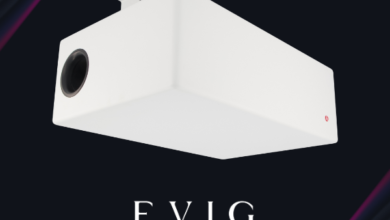How to Choose the Right Network Access Control Solutions

With more devices connecting to enterprise networks than ever before, NAC helps protect organizations from security breaches and compliance violations. But, not all tools are created equal.
You need a solution to identify and monitor all devices, including BYOD, IoT, and operational technology (OT) devices. It should also have granular policy creation and enforcement capabilities with minimal network and end-user disruptions.
Consider Your Needs
Unlike older legacy network access control solutions that rely on a hardware appliance deployed to monitor each packet of data flowing through the network, modern NAC platforms offer software-based capabilities for monitoring and securing devices and users. The centralized software platform can protect remote endpoints (workstations, laptops, and IoT) from cyber threats, provide appropriate access, and block rogue devices.
A quality NAC solution will immediately discover any device that attempts to connect to a network. It can categorize it by type, determine whether it is a corporate or personal device, and even run a health check to detect security issues. Businesses can then create and enforce policies that grant different levels of network access to each device based on factors such as type, location, time, staff roles, and OS type. These policies can be enforced across the entire enterprise through an active directory integration or a cloud deployment model.
NAC solutions are also increasingly used to secure IoT devices, often deployed in operational technology (OT) environments or BYOD use cases, and can quickly go unmonitored in a traditional network. Today’s most popular NAC products are full-suite cybersecurity solutions from companies that offer unified management and network security policies for IoT and remote endpoints, workstations, and traditional network devices.
Consider Your Budget
With more and more devices connecting to your network, you need a robust security solution. However, deploying multiple solutions from different vendors can increase your network infrastructure’s complexity and cost you more on maintenance. Deploying a centralized solution that helps you control access to your organizational data can help simplify your cybersecurity and save you money.
Most NAC technical solutions use digital technology to prevent unauthorized devices from accessing internal networks. They use either pre-admission control or post-admission control to secure device access. Pre-admission controls apply NAC policies before a device gains entry to the network. Post-admission controls monitor network traffic to prevent unauthorized devices from accessing the organization’s critical data.
A good NAC solution will also enable you to limit access on a per-device or user, depending on their role within your organization. For example, you can grant guests and contractors less network access than full-time employees. You can also quarantine devices that don’t comply with your security policy, allowing them to update software or take other corrective measures without touching the rest of your internal network.
You should also ensure your NAC solution is compatible with your existing systems. For instance, it should work well with your IT directory system to verify the identity of users and their associated devices.
Consider Your Deployment Model
Just as door locks and security badges prevent unauthorized people from accessing physical and organizational resources like offices and buildings, network access control solutions help protect digital organization-wide resources. They provide granular visibility into the devices and users on your network and restrict the types of devices and connections that can be made to those resources.
For example, some NAC solutions have features that enable them to block rogue or untrusted IoT devices from the network. In contrast, others use analytics to identify and flag suspicious activity for further investigation. Some also monitor and detect when an attacker has a foothold on a device, and they can quarantine that device to prevent further damage.
Choosing the right network access control solution also requires considering how many endpoints you have. The tool you select should be able to discover, profile, and manage all of your endpoints — from workstations and laptops to mobile devices and IoT. It should also integrate with popular IT systems.
Some network access control solutions offer additional capabilities like malware prevention and virtual private networks. For instance, other provides advanced user authentication, device security and segmentation technology, and integration with various identity directories and cloud-based service providers. It can be deployed as a software-as-a-service (SaaS) platform on the cloud or on-premise.
Consider Your Vendor
Network access control solutions use a policy-based model to allow or deny devices and people on the network. These policies are based on device type, user role, location, traffic patterns, and other criteria.
To choose the right solution for your organization, you need to understand the capabilities and limitations of each vendor. This will help you narrow the field and find the best network access control solutions.
For example, if you need to manage BYOD devices or provide temporary guest access, look for a solution with solid support for these features. Consider the limit on the number of devices the solution can monitor. This will have an impact on pricing.
Similarly, you must ensure IoT devices stay within their VLAN or receive specialized quality-of-service settings. In that case, you will want to choose a solution with robust device profiling and posture capabilities. Some vendors offer these capabilities in separate products, while others include them as part of a unified security platform.
For example, some solutions provide a complete 360-degree cybersecurity solution, including malware protection, network threat prevention, and connectivity management. It offers granular policy enforcement and a powerful automation toolkit to simplify workflows. In addition, the solution provides support and one-on-one assistance.




